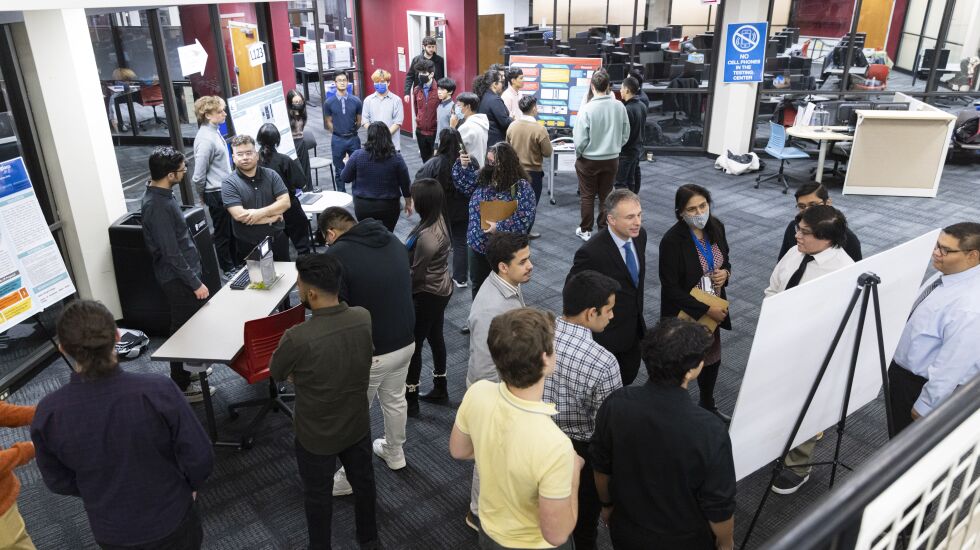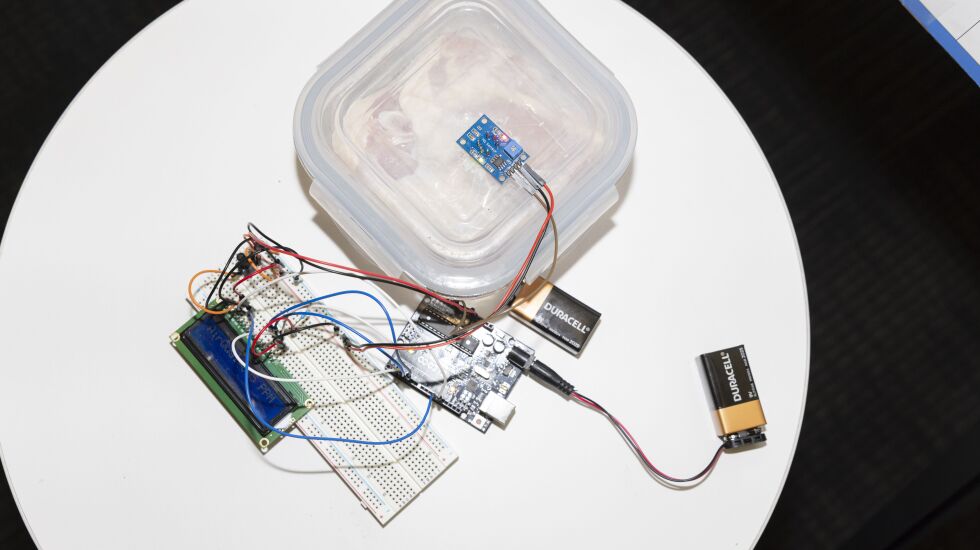
Victor Correa loved to take apart anything he could get his hands on and repurpose it into something new when he was a child in Mexico.
As he got older, he found more avenues to express his interest in the mechanical side of everyday objects. An obsession was born.
“I found out about robotics and fell in love with it,” Correa said. “So I started building robots in my home.”
Correa, 18, and his family came to the United States seven years ago and he is now studying engineering at Wilbur Wright College in Portage Park.
Thursday evening, Correa’s team of first-year engineering students was among 16 others competing for a $5,000 scholarship in the program’s third annual Engineering Idea competition.
The competition is the culmination of the real-world skills the students have learned during their first semester in the engineering success seminar, which aims to prepare students for successful college and professional careers.

Students had five minutes to pitch to judges — which included faculty, last year’s winners and engineers from companies like Google and Shure — on their creations. The winners will be announced next week.
Correa’s team built a prototype for a firefighting robot, dubbed the Anti-Disaster Automated Machine, or ADAM, which is designed to be deployed in high-risk fire areas to extinguish flames. The finished product would be water and fire resistant, all-terrain capable and would have the ability to communicate over long distances.
“We had this idea to get a robot instead of a firefighter to be deployed and save the life of the firefighter, because some of them die fighting these fires,” Correa said. “The danger zones are really bad and fighting the fire is really complicated.”
It took Correa about a month to build the prototype, which was made mostly from repurposed materials.
Another team decided to create a smart food storage container to prevent people from contracting foodborne illnesses and to discourage waste. They developed a sensor that can measure ammonia and other decomposition gasses inside Tupperware or food packages to more accurately determine if its contents have begun to expire.
“Some things smell, but things like fish are naturally stinky, so you would never really know for sure if something is past its edible stage,” said team member A.J. Osiecki, 19.

Her early interest in engineering was sparked by watching her dad work on cars as a mechanic, she said. “I was really super interested in how everything fit together. It’s like a puzzle, and that’s something I’ve always loved about engineering. It’s finding new ways to solve world problems.”
Other projects included a football helmet that monitors concussion symptoms, a bracelet that can alert bike riders to nearby vehicles and a robotic arm that separates recyclables from garbage.
Doris Espiritu, dean of the Center of Excellence for Engineering and Computer Science at Wright College, said judges were looking for teams that were able to communicate and collaborate well together.
“These are first-year students; I don’t expect the moon,” Espiritu said.
Many of the students at the competition are enrolled in the college’s Engineering Pathway program, which guarantees admission to the University of Illinois Urbana-Champaign’s engineering program and the Armour College of Engineering at the Illinois Institute of Technology after students receive their associate’s degree from the city college.
Espiritu spearheaded the program to recruit students who are underrepresented in engineering and computer science and hopes to expand it to other city colleges.
“We’re adding to the diversity, and our students are really prepared,” Espiritu said.







